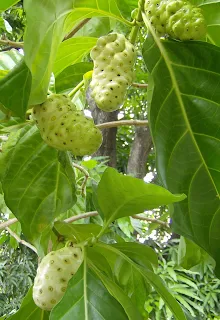By Liliana Usvat
Blog 363-365
What happen in 1996?
Somebody at the international level did something took a bad decision that affected the world climate and forested areas.
Madagascar forest started to disappear. 90% of the forests have been erased since that year.
Romanian Forest lost 30% of the wood mass. A large amount of forests are still erased by a foreign company and Austrian Company.
England moved 49 power plant from coal to wood as if wood is renewable energy. They use wood from other countries since they have such a big empire.
USA has around 200 power plants using wood derivative products.
Canada is loosing 45 sq km per year of forest. Logging companies sue for millions of dollars Green peace for bringing to attention of clear cutting practices which erase the ability of the forest to regenerate itself.
In one province in Canada British Columbia
During the period 1992 to 1996, industry sales increased from $11 billion in 1992 to almost $18 billion in 1995 before falling to about $16 billion in 1996. During that period, net earnings ranged from a loss of about $250 million in 1992 to net earnings of about $1.3 billion in each of 1994 and 1995 before turning to an estimated loss of $250 million in 1996.
Sand storms are sweeping Asia. South Korea started to plant trees in China to avoid sand storms in her country.
Japan’s voracious consumption has been well documented, according to the report, as have the “exploitative activities of [Japanese] companies overseas.” Rather than reforming their purchasing and consumption patterns, however, “many companies have set up highly efficient public relations departments to counter allegations and deflect attention away from their activities.”
The report notes that, “rather than making more information publicly available, the sogo shosha, Japan Lumber Importers Association, and the Japanese government no longer release timber import figures for fear of further criticism.” In a similar move, these corporations have also reduced their direct logging operations, and instead buy from Chinese companies that have taken over the cutting and hauling.
Them machines that cut trees are more and more complex and efficient.
Worldwatch Institute confirms this in its 1999 State of the World report. “In industrial countries, where most of the world’s commercial wood is produced, timber harvest is the primary cause of forest degradation,” says the report. “In developing nations, land clearing for agriculture and grazing combine with timber harvesting to reduce forest area. It is often timber harvesting, accompanied by roads that penetrate the forest and provide access to otherwise inaccessible places, that precipitates land clearing.”
Links
http://www.globalforestwatch.org/map
Blog 363-365
What happen in 1996?
Somebody at the international level did something took a bad decision that affected the world climate and forested areas.
Madagascar forest started to disappear. 90% of the forests have been erased since that year.
Romanian Forest lost 30% of the wood mass. A large amount of forests are still erased by a foreign company and Austrian Company.
England moved 49 power plant from coal to wood as if wood is renewable energy. They use wood from other countries since they have such a big empire.
USA has around 200 power plants using wood derivative products.
Canada is loosing 45 sq km per year of forest. Logging companies sue for millions of dollars Green peace for bringing to attention of clear cutting practices which erase the ability of the forest to regenerate itself.
In one province in Canada British Columbia
During the period 1992 to 1996, industry sales increased from $11 billion in 1992 to almost $18 billion in 1995 before falling to about $16 billion in 1996. During that period, net earnings ranged from a loss of about $250 million in 1992 to net earnings of about $1.3 billion in each of 1994 and 1995 before turning to an estimated loss of $250 million in 1996.
Sand storms are sweeping Asia. South Korea started to plant trees in China to avoid sand storms in her country.
Japan’s voracious consumption has been well documented, according to the report, as have the “exploitative activities of [Japanese] companies overseas.” Rather than reforming their purchasing and consumption patterns, however, “many companies have set up highly efficient public relations departments to counter allegations and deflect attention away from their activities.”
The report notes that, “rather than making more information publicly available, the sogo shosha, Japan Lumber Importers Association, and the Japanese government no longer release timber import figures for fear of further criticism.” In a similar move, these corporations have also reduced their direct logging operations, and instead buy from Chinese companies that have taken over the cutting and hauling.
Them machines that cut trees are more and more complex and efficient.
Worldwatch Institute confirms this in its 1999 State of the World report. “In industrial countries, where most of the world’s commercial wood is produced, timber harvest is the primary cause of forest degradation,” says the report. “In developing nations, land clearing for agriculture and grazing combine with timber harvesting to reduce forest area. It is often timber harvesting, accompanied by roads that penetrate the forest and provide access to otherwise inaccessible places, that precipitates land clearing.”
Links
http://www.globalforestwatch.org/map


